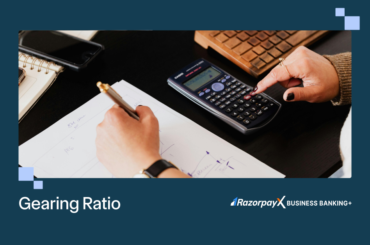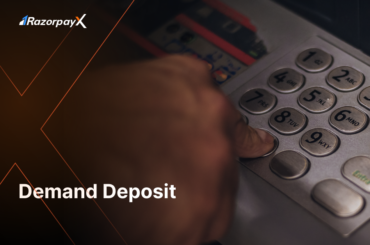Auto sweep facility is a feature of bank accounts that helps the account holder automatically save money.
It links a bank account and a fixed deposit in such a way that any time your savings account balance exceeds a certain amount, the extra money is swept into a fixed deposit account.
Let’s dive into this tell-all piece about the auto sweep, simplify some jargon, and learn how this facility works for you.
Read more: Business Account Checklist: Meaning, Types and Features
Table of Contents
What is Auto Sweep Facility?
Auto sweep facility allows account holders to move surplus funds from a savings account to a Fixed Deposit, and access these funds at any time without any lock-in period or penalties.
When the balance in your account falls below the stipulated threshold, the amount of the shortfall flows back into your account. This is called sweep-in.
This process of sweeping the money into or out of your account happens at the end of each working day – ensuring that the optimum balance is maintained in your account. At the same time, all your excess cash gets the highest return from a safe fixed deposit.
How Does the Auto Sweep Facility Work?
Auto sweep facility needs to be enabled on your savings account. Once enabled, you will need to specify a threshold limit. When the balance in your account exceeds this threshold the surplus will be automatically transferred to a FD account. This is called a sweep-in.
The auto sweep facility does not affect your liquidity. If you try to make a transaction valued higher than your specified threshold, funds will be swept-out from your FD back into your savings account for your use.
In this way, you can earn interest on your money in both the FD and savings accounts.
How to Activate Auto Sweep Facility?
You can activate auto sweep facility both online and in-person. Before raising the request, make sure you have planned your threshold limit and budgets well.
For online activation, login to your mobile app or your internet banking portal.
You may also speak to customer service agents of your bank of choice. Once the service request is raised, it may take up to 1-2 days for the facility to get activated on your savings account.
For an in-person process, you can visit the nearest bank branch and raise a request for auto sweep facility to be enabled.
Auto Sweep Jargon Explained
Here are a few terms you should be familiar with before availing of the auto sweep facility:
- FD tenure/period: It is the duration of the fixed deposit, that is, the time for which the FD has been created. Banks might offer only a 1-year deposit as part of the auto sweep facility. Some banks, however, provide a flexible tenure for Fixed Deposits.
- LIFO/FIFO: The excess amount swept out of your account is invested in FD units, each of them typically broken into small denominations. The bank may follow the FIFO (First In First Out) method or the LIFO (Last In First Out) method to liquidate FD units to maintain the stipulated balance in your account.In the LIFO system, the bank will liquidate the FD units invested in which you invested most recently, and the amount will be transferred to your account. The bank will liquidate the FD units created the earliest in the FIFO system.
- Pre-closure penalty: The penalty charged for withdrawing from a Fixed Deposit before its term has expired.
Benefits of Auto Sweep Facility
Whether you are a business owner using a current account or a salaried individual using a savings account, there are benefits aplenty to enabling the auto sweep facility.
1. Higher FD Rates
The main reason to opt for the auto sweep facility is to earn interest on money in your account. To get a better understanding of your expected earnings, you could even use an FD interest calculator.
2. Liquidity
The sweep facility enables you to have ample liquidity while ensuring a good return on your funds. Say you have an EMI pending or a cheque due and are running low on funds in your sweep current account. Your bank will automatically transfer the funds from the amount invested earlier to your account to ensure timely payment of the EMI or the cheque, saving you time and effort.
3. Flexibility
Banks generally let you choose the period of the deposit, the maturity, and the threshold amount. There may, however, be a minimum holding period for FDs, and premature withdrawal may lead to loss of interest.
4. Linking Multiple Deposits
You can link multiple deposits to the current account for sweep-in to ensure you never have a liquidity crunch. In such cases, banks usually apply the LIFO (Last in First Out) rule, which means that, when a sweep-in is triggered, funds will be transferred to your account from the latest deposit linked to the sweep-in facility.
5. Separate Corpus
Apart from the higher interest rate, the sweep-in facility helps you create a corpus that you can access in an emergency, without having to liquidate any other asset.
[Read more: Differences Between a Current Account and a Savings Account]
Taxes on Auto Sweep Facility
Interest earned on savings account where auto sweep facility is enabled is categorised as ordinary income and TDS of 10% is deducted if the interest exceeds Rs 10,000 in a year.
The FD account linked through the auto sweep facility will also provide interest – this is taxable as income from other sources, where TDS is not auto-deducted but will have to be declared in income tax returns.
The tax implications of auto sweep facility can be complicated, so it is important to consult with a tax advisor to understand your specific situation.
Summing up
If you want to save money, maintain a robust balance in your current or savings account and stay on top of your finances without having to tinker with your bank account every single day, then the auto sweep facility is the way to go.
Read more: RBI on Auto Sweep Facility
Automated Banking and Finance Management
The auto sweep facility is only one example of how automation is a game changer for finance. If you can’t make computers do your work for you, what’s the point of living in the 21st century?
RazorpayX is a business banking suite that offers automations, integrations and more so you can bank like the future.
- Cut manual effort and mistakes with automated payouts, taxes and more
- A current account now directly integrated with your favourite accounting software
- Smart bulk payouts so you don’t have to worry about any missed payments
- Vendor management, payroll management – all in one place
- AI-driven financial insights with RazorpayX smart dashboard
Frequently Asked Questions
What is auto sweep out facility?
The auto sweep facility, when enabled, transfers money from your account in excess of a stipulated balance to a deposit that gives you a greater return - usually a fixed deposit (FD). This is called sweep-out.
What is Auto sweep in facility?
When the balance in your account falls below the stipulated threshold, the amount of the shortfall flows back into your account. This is called sweep-in.
How does Auto Sweep facility benefit you?
Whether you are a business owner using it through your current account or a salaried individual using it out of a savings account, there are benefits aplenty to enabling the auto sweep facility.
What is the minimum balance requirement for auto sweep facility?
The minimum balance requirement for an auto sweep facility varies across banks. Each bank sets its own threshold. Typically, if your savings account balance exceeds this minimum, the excess amount is automatically transferred to a fixed deposit. This helps you earn higher interest on idle funds while maintaining a minimum balance in your savings account.
Can I have multiple auto-sweep accounts with different thresholds?
Yes, you can typically have multiple auto-sweep accounts with different thresholds. This allows you to manage your savings and investments effectively. Each account can have its own minimum balance requirement, allowing you to allocate funds based on different financial goals.





